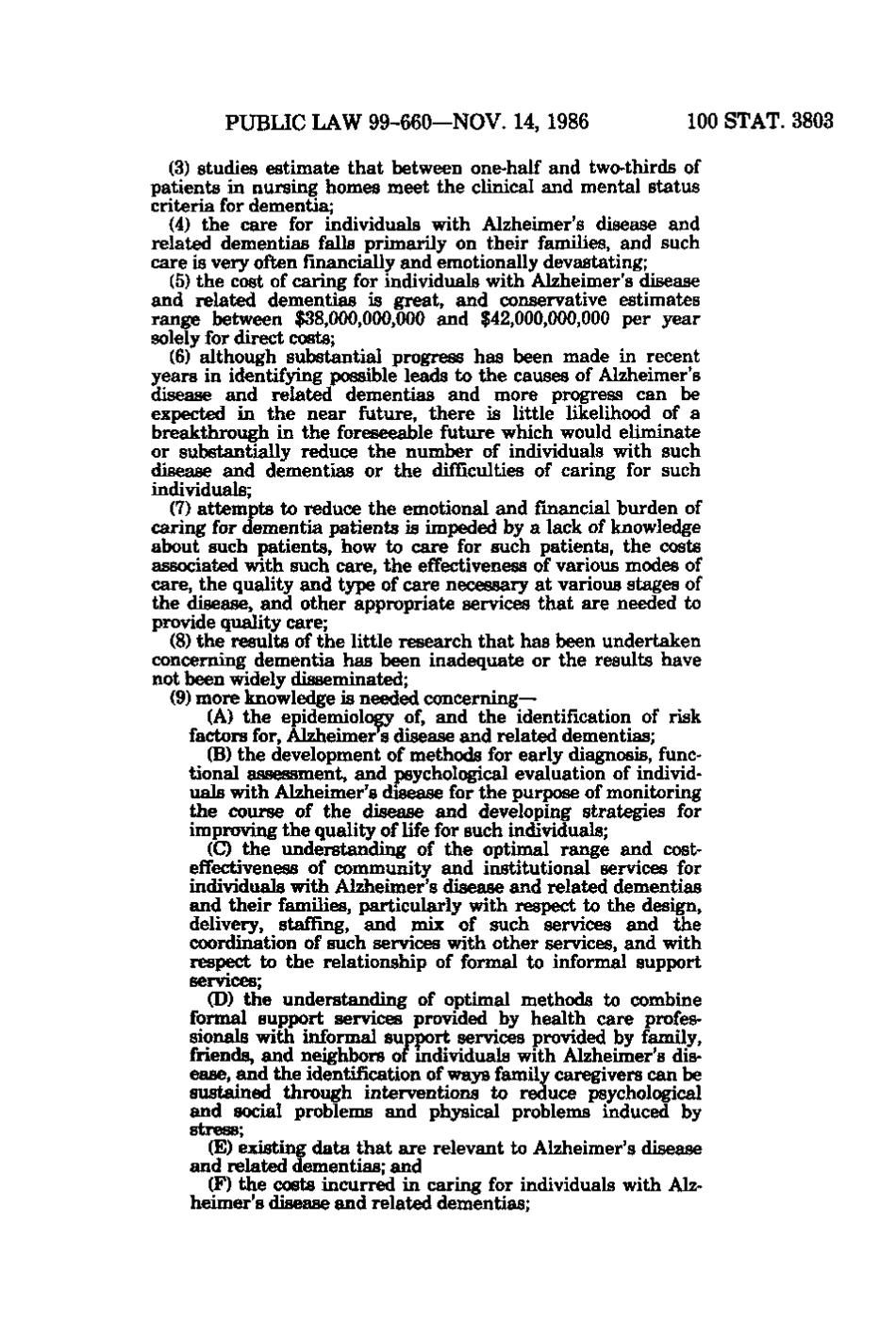PUBLIC LAW 99-660—NOV. 14, 1986
100 STAT. 3803
(3) studies estimate that between one-half and two-thirds of patients in nursing homes meet the clinical and mental status criteria for dementia; (4) the care for individuals with Alzheimer's disease and related dementias falls primarily on their families, and such care is very often financially and emotionally devastating; (5) the cost of caring for individuals with Alzheimer's disease and related dementias is great, and conservative estimates range between $38,000,000,000 and $42,000,000,000 per year solely for direct costs; (6) although substantial progress has been made in recent years in identifying possible leads to the causes of Alzheimer's disease and related dementias and more progress can be expected in the near future, there is little likelihood of a breakthrough in the foreseeable future which would eliminate or substantially reduce the number of individuals with such disease and dementias or the difficulties of caring for such individuals; (7) attempts to reduce the emotional and financial burden of caring for dementia patients is impeded by a lack of knowledge about such patients, how to care for such patients, the costs associated with such care, the effectiveness of various modes of care, the quality and t)rpe of care necessary at various stages of the disease, and other appropriate services that are needed to provide quality care; (8) the results of the little research that has been undertaken concerning dementia has been inadequate or the results have not been widely disseminated; (9) more knowledge is needed concerning— (A) the epidemiology of, and the identification of risk factors for, Alzheimer's disease and related dementias; (B) the development of methods for early diagnosis, functional assessment, and psychological evaluation of individuals with Alzheimer's disease for the purpose of monitoring the course of the disease and developing strategies for improving the quality of life for such individuals; (C) the understanding of the optimal range and costeffectiveness of community and institutional services for individuals with Alzheimer's disease and related dementias and their families, particularly with respect to the design, delivery, staffing, and mix of such services and the coordination of such services with other services, and with respect to the relationship of formal to informal support services; (D) the understanding of optimal methods to combine formal support services provided by health care professionals with informal support services provided by family, friends, and neighbors of individuals with Alzheimer's disease, and the identification of ways family caregivers can be sustained through interventions to reduce psychological and social problems and physical problems induced by stress; (E) existing data that are relevant to Alzheimer's disease and related dementias; and (F) the costs incurred in caring for individuals with Alzheimer's disease and related dementias;
'.-.:
�
